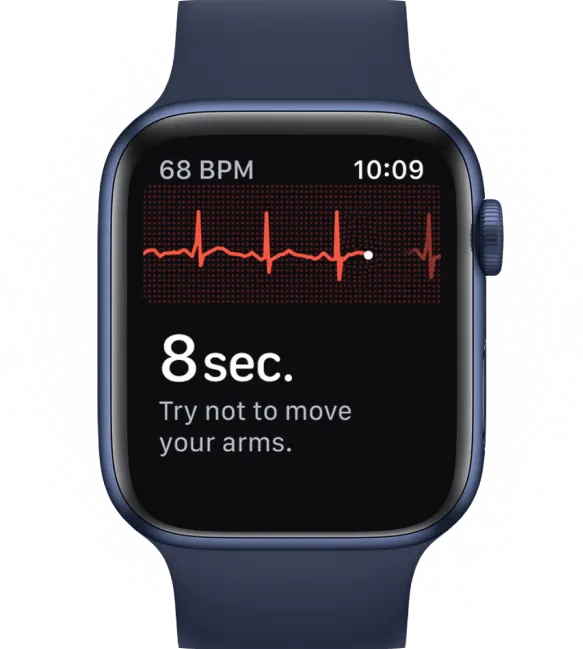Key Takeaways
Hello, heart hero. Starting a new medication like mexiletine is a big step forward in managing your heart health, and it’s completely normal to have questions about mexiletine side effects. Most often, the side effects people notice are related to their digestive system or feeling a bit off-balance, things like nausea or dizziness. More serious effects, thankfully, are much less common.
Your Guide to Navigating Mexiletine

If you're beginning treatment with mexiletine, you’re taking an active role in controlling a heart rhythm condition. We get it, this journey can be a mix of hope and worry, especially when you start thinking about potential side effects. You've probably felt that navigating the healthcare system can be overwhelming at times, and you absolutely deserve clear, straightforward information you can rely on.
Think of this guide as a supportive partner, here to walk you through everything you need to know. Our goal is to demystify what it's like to take this medication, in a friendly and reassuring way. We’ll explore why side effects might happen and give you practical, real-world advice on what to watch for and how to talk about any concerns with your doctor.
What We Will Cover Together
We truly believe that being informed is the key to managing your health with confidence. You are your own best advocate, and our aim is to give you the tools you need. Here’s what we'll explore together:
- Common and Minor Issues: We’ll start with the most frequent side effects, like an upset stomach or tremors, and share simple tips that can help manage them.
- Serious Heart-Related Effects: We’ll break down complicated cardiac terms into easy-to-understand concepts, so you know exactly which warning signs need immediate attention.
- Monitoring Your Health: You'll discover how to keep track of your symptoms and how modern tools, like the Qaly app, can help you monitor your ECG at home, making your doctor visits even more productive.
Your peace of mind matters most. Understanding both the benefits and potential challenges of mexiletine empowers you to be an active participant in your care, helping you feel safe and in control every step of the way.
By the end of this guide, you’ll have a much clearer picture of what to expect, how to handle any issues that come up, and how to partner effectively with your healthcare team.
Navigating Common Side Effects
Whenever you start a new medication, it's completely normal to wonder what changes you might feel as your body adjusts. With mexiletine, the most common side effects are usually related to your digestive system and your nervous system.
Think of it this way: your body is getting used to a new set of instructions designed to help your heart find a steadier rhythm. Sometimes, those instructions can be felt in other places, like your stomach or brain. The good news is that many of these effects are manageable and often get better over time. Let's walk through what you might notice.
Tummy Troubles and How to Tame Them
One of the most frequently reported side effects of mexiletine involves the gastrointestinal (GI) system. You might notice things like nausea, heartburn, or an upset stomach. This happens simply because the medication can sometimes irritate the lining of your stomach as it's absorbed.
While this can be uncomfortable, a simple change often makes a huge difference:
- Take Mexiletine with Food: Always try to take your dose with a meal or at least a good-sized snack. Food acts like a buffer, helping to protect your stomach lining.
- Stay Upright After Dosing: After taking your pill, try to sit or stand for about 30 minutes. This little trick can help prevent heartburn.
- Stay Hydrated: Drinking plenty of water throughout the day helps with overall digestion and can ease some of these symptoms.
These small habits can make the adjustment period much smoother.
Feeling Dizzy or Unsteady
It's also common to feel a bit dizzy, lightheaded, or even notice a slight tremor in your hands. These nervous system effects happen because mexiletine works on sodium channels in your heart, but these same channels also exist in your brain and nerves. It’s like a broadcast signal meant for your heart is being picked up by other receivers in your body.
Again, this is often most noticeable when you first start the medication or after your doctor increases the dose. To manage this:
- Move Slowly: When getting up from a sitting or lying position, take your time. This gives your body a moment to adjust.
- Avoid Sudden Movements: Be mindful when turning your head quickly or bending over.
- Stay Safe: Be extra cautious when driving or operating machinery until you're sure how mexiletine affects you.
Remember, your body is doing important work as it adapts. These feelings of being "off-balance" are often temporary and a sign that the medication is starting to do its job.
Extensive reviews of patient experiences back this up. For instance, data from studies involving thousands of patients showed that about one-third experienced some form of GI complaint. While that number might sound high, it just highlights how important it is to be prepared with these management tips, as most people are able to continue the medication successfully.
Understanding the full picture is key to feeling in control of your treatment. For a broader look at how different heart rhythm medications compare, you might find our guide on antiarrhythmic drug side effects helpful. Knowing what to expect can provide a lot of peace of mind.
Understanding Serious Heart-Related Side Effects

Looking at the more serious mexiletine side effects can feel a bit overwhelming, and that’s completely understandable. Medical terms related to the heart can sound complex and even scary. My goal here is to break everything down so you feel informed and in control, not alarmed.
Think of it this way: the common side effects are like small bumps in the road on your treatment path. These serious ones are the critical warning signs that tell you it’s time to pull over and get professional help. Knowing what to look for is the first step in managing your health journey safely.
Let’s walk through them together.
The Concept of Proarrhythmia
One of the most important concepts to grasp is something called proarrhythmia. In simple terms, it means a medication designed to fix an irregular heartbeat can, in rare cases, cause a new or even worsened arrhythmia. It sounds completely backward, I know, but it's a known risk with many antiarrhythmic drugs.
Imagine your heart's natural rhythm is set by a skilled drummer keeping a perfect beat. Mexiletine is like a conductor stepping in to get a slightly off-tempo drummer back on track. Most of the time, the conductor’s guidance works wonderfully. But on rare occasions, the conductor’s instructions might accidentally introduce a totally different, incorrect rhythm.
This is precisely why your doctor monitors you so carefully, especially when you first start the medication. They are watching to make sure the "conductor" is helping, not causing a new issue. It's a rare event, but it underscores how vital it is to stay connected with your healthcare team.
Proarrhythmia isn't something to live in fear of, but it is something to be aware of. If you notice palpitations that feel new or different, that’s your signal to call your doctor. You know your body better than anyone.
It's also helpful to recognize general cardiac red flags. For instance, knowing the symptoms of heart failure can give you a broader context for what to watch out for in your overall heart health.
Bradycardia: A Heart Rate That Is Too Slow
Another serious side effect to be aware of is bradycardia, the medical term for a heart rate that drops dangerously low. While mexiletine is meant to calm down chaotic, fast heartbeats, it can sometimes slow things down a little too much.
.webp)
When your heart rate is too slow, your body and brain can't get the oxygen-rich blood they need to work properly. This can lead to some very specific symptoms you should never ignore:
- Extreme Fatigue: Feeling unusually wiped out, far beyond your normal tiredness.
- Dizziness or Fainting: Feeling lightheaded, woozy, or actually passing out.
- Shortness of Breath: Having trouble breathing, especially with very little physical effort.
- Confusion: Feeling disoriented or finding it hard to think straight.
If you experience any of these, it's critical to get medical help right away. Your doctor can quickly check your heart rate and figure out if your medication is the cause.
Monitoring Your Heart's Electrical System
Because of these potential effects, your doctor will order regular electrocardiograms (ECGs or EKGs). These tests let them watch your heart's electrical activity up close. They'll pay special attention to specific measurements called intervals, like the QRS and QTc intervals.
Changes in these intervals can be an early sign that the medication is affecting your heart in a way that might lead to problems down the road.

It's also important to know that other medications can affect these same intervals. For more on this, our guide on drugs that cause QT prolongation is a great resource. Understanding these potential interactions is a key part of staying safe on your treatment journey.
Recognizing Less Common Side Effects
While most people taking mexiletine feel the more common effects in their stomach or notice changes in their balance, it’s smart to be aware of other, less frequent ways the medication can show up in your body. Think of it this way: mexiletine’s primary job is to calm down your heart's electrical system, but that influence can sometimes ripple out to other systems, like your brain, skin, or liver.
Knowing about these possibilities isn't meant to cause alarm. Instead, it’s about empowering you to connect the dots if you start to notice a new, unusual symptom. Having the full picture of potential mexiletine side effects helps you be a better advocate for your own health.
Changes in Your Nervous System
Mexiletine works by acting on sodium channels, which are like tiny electrical gates in your body's cells. While this is great for stabilizing your heart rhythm, these same gates are found all over your nervous system, including your brain. Because of this, the medication can sometimes lead to some unexpected changes in how you think, feel, or even dream.
You might notice things that just feel a little off or out of character for you. These can include:
- Brain Fog or Confusion: Those moments where you feel unusually forgetful, or it's just hard to focus.
- Vivid Dreams: Noticing your dreams are suddenly more intense or memorable than they used to be.
- Mood Changes: Feeling more irritable than usual or experiencing other shifts in your emotional state.
These symptoms can happen because the medication subtly alters your brain's chemistry. While they can feel unsettling, they are often on the milder side and may get better as your body continues to adjust to the medication.
Watching for Skin and Liver Reactions
It’s also wise to keep an eye on your skin and know the warning signs of potential liver issues. These side effects are definitely rare, but spotting them early is the most important thing.
Some people might notice minor skin changes, like sweating more than usual, dry skin, or even a bit of hair loss. Much more seriously, though very rarely, a severe rash can develop. If you see any kind of widespread rash, especially if it comes with blisters or a fever, that’s a clear sign to get medical help right away.
Your liver is your body's main processing plant, and it has to work hard to break down medications like mexiletine. In a very small number of people, this can lead to liver inflammation. The key warning signs to look out for are:
- Yellowing of your skin or the whites of your eyes (jaundice)
- Dark-colored urine
- Unexplained fatigue that just won’t go away
- Pain in the upper right side of your belly
Knowing about these rarer side effects gives you a complete picture. It helps you distinguish between a minor annoyance and a symptom that requires a conversation with your doctor.
Looking at data collected after the medication was on the market gives us a clearer sense of how often these things happen. For instance, short-term memory loss has been reported in about 0.9% of patients, and psychological changes like hallucinations have occurred in around 0.3%. Similarly, different types of skin reactions are seen in 0.1% to 1% of people. These numbers confirm that while these side effects aren't common, they are a recognized part of the medication’s profile. You can explore a detailed report on these findings for more information.
How Doctors Manage and Minimize Side effects
We get it, thinking about potential side effects can be a big source of anxiety. It's really important to remember that you are not going through this alone. Getting mexiletine right is a genuine partnership between you and your healthcare team, and they have a very careful, proactive plan to keep you safe and feeling as good as possible.
This isn't just about trial and error; it's a well-established strategy to find the perfect balance for your body. Let's walk through the thoughtful steps your doctor takes to make sure your treatment is both effective and easy to tolerate.
Starting Low and Going Slow
One of the bedrock principles for starting mexiletine is the "start low and go slow" approach. Your doctor will almost always begin with the lowest dose that's known to be effective. Think of it like tuning a sensitive instrument; you make small, gentle adjustments until you find the perfect note.
This gradual process gives your body time to adapt to the medication, which can dramatically reduce the intensity of initial side effects like nausea or dizziness. It helps your doctor find that "sweet spot," the ideal dosage where the medication is controlling your arrhythmia with the fewest possible side effects. It’s a patient, careful method that puts your comfort and safety first.
The Importance of Regular Monitoring
Since mexiletine works on your heart's electrical wiring and is processed by your liver, your doctor will order regular tests to keep a close eye on how your body is handling it. This proactive monitoring is a key part of the safety net they build around you, allowing them to catch any potential issues long before they become serious problems.
These routine check-ins typically include:
- Blood Tests for Liver Function: A simple blood draw lets your team check on your liver enzymes, making sure the organ is processing the medication without any strain.
- Electrocardiograms (ECGs or EKGs): These quick, painless tests give your doctor a detailed picture of your heart's electrical activity. This ensures the medication is having the desired effect without causing any unwanted changes to your rhythm or intervals.
This consistent monitoring isn't just protocol, it's the sign of good, thorough care. It shows that your doctor is focused on your overall well-being throughout the entire process, not just on treating a condition.
This careful management strategy has proven to be very effective. A clinical evaluation of patients with hard-to-treat arrhythmias found that while side effects are common, they are also highly manageable. In the study, about 52% of patients experienced side effects during long-term therapy, but impressively, only 7% had to stop the medication because of them. This really highlights that with the right adjustments and monitoring, most people can continue treatment successfully. You can learn more about these findings from the European Heart Journal.
Your Active Role in Monitoring Your Health
When it comes to your health, you are the most important member of your care team. Taking an active role isn't just empowering, it's absolutely essential for getting the best possible results from your treatment. This is especially true when you start a medication like mexiletine, where your day-to-day experience provides critical clues for your doctor.
It's easy to feel like you're just a passenger in the healthcare system, but you have more control than you might think. By paying close attention to how you feel and learning to spot key symptoms, you give your doctor the real-world data they need to fine-tune your treatment. This partnership ensures your concerns aren't just heard, but are addressed effectively.
Knowing When to Call and When to Act Fast
One of the most vital skills you can learn is telling the difference between a side effect that warrants a phone call and one that requires immediate emergency care. This knowledge gives you the confidence to act the right way without needless anxiety.
- Call Your Doctor If: You're noticing persistent but non-life-threatening symptoms. This could be ongoing mild nausea, dizziness that just won't quit, or a tremor that's become a nuisance. Also, be sure to reach out if you spot a new skin rash or feel unusually fatigued. These are important conversations to have.
- Seek Emergency Care If: You experience any sign of a serious heart-related reaction. This includes fainting or feeling like you're about to pass out, new or severe chest pain, extreme shortness of breath, or palpitations that feel dangerously fast or chaotic. These symptoms demand immediate medical attention.
The decision tree below can help simplify how to respond when you notice a side effect from mexiletine.
Modern Tools for Better Conversations
Today's technology gives us amazing tools to gather data about our health right from home. This isn't about replacing your doctor, but about arming yourself with better, more detailed information for your appointments. Smartwatches and other wearables can track your heart rate and rhythm all day, offering insights that a single, brief ECG in the clinic might miss.
These at-home tools can be incredibly powerful. For a deeper dive into what you can monitor yourself, you can learn more about how to check heart health at home.
Keeping a Simple Symptom Diary
One of the most effective tools at your disposal is a simple notebook or a note-taking app on your phone. Keeping a symptom diary helps you track your experiences with precision, allowing you to paint a clear picture for your doctor.
Your personal health diary transforms vague feelings into concrete data. It helps you say, "I felt dizzy every day around 11 AM," instead of, "I've been feeling dizzy lately." That level of detail is incredibly valuable to your doctor.
When you log an entry, try to include these four things:
- The Date and Time: Pinpoint exactly when the symptom happened.
- The Symptom: Describe what you felt in your own words (e.g., "fluttering in my chest," or "lightheaded when I stood up").
- Duration: How long did it last? Was it seconds, minutes, or hours?
- Activity: What were you doing just before and during the symptom? (e.g., "after walking up the stairs," or "while resting on the couch").
Sticking to a health monitoring routine can be tough. If you find yourself slipping, learning about getting back on track when your habits fall apart can be a huge help. By embracing this active role, you become an indispensable partner in your own care, ensuring your treatment plan is truly working for you.
Frequently Asked Questions About Mexiletine
We know you have questions, and you absolutely deserve clear answers. It’s smart and completely normal to be curious about your treatment plan.
Let's walk through some of the most common questions people have about mexiletine side effects. Our goal is to give you straightforward, reassuring information to help you feel more confident on your health journey.
Will Mexiletine Side Effects Go Away?
For many people, the short answer is yes. Common side effects like nausea, dizziness, and tremors are often most noticeable when you first start taking mexiletine or right after a dose increase. Think of it as an adjustment period for your body.
As your system gets used to the medication over several weeks, these effects often fade or disappear completely. Simple tricks, like always taking your pill with food, can make a big difference, too. But if any side effects are still bothering you after a while, it's really important to let your doctor know.
Can I Drink Alcohol While Taking Mexiletine?
It’s generally best to limit or avoid alcohol while you're on mexiletine. Alcohol can sometimes make certain side effects worse, especially dizziness, lightheadedness, and coordination problems.
On top of that, both alcohol and mexiletine are processed by your liver. Combining them can put extra strain on this vital organ. The best approach is to have an open conversation with your doctor about your alcohol use so you can understand the specific risks for your health.
Your safety is the top priority. Being honest with your healthcare team about all aspects of your lifestyle, including alcohol, allows them to give you the best possible guidance.
What Should I Do If I Miss a Dose?
If you happen to miss a dose, just take it as soon as you remember. There’s one important exception: if it’s almost time for your next scheduled dose, you should skip the one you missed and just get back on your regular schedule.
Never take two doses at once to "catch up." A double dose can significantly increase your risk of more serious side effects. If you're ever in doubt, the safest move is always to call your doctor or pharmacist for advice.
Track your heart rhythm, understand your symptoms, and have more informed conversations with your doctor.










.png)
.png)